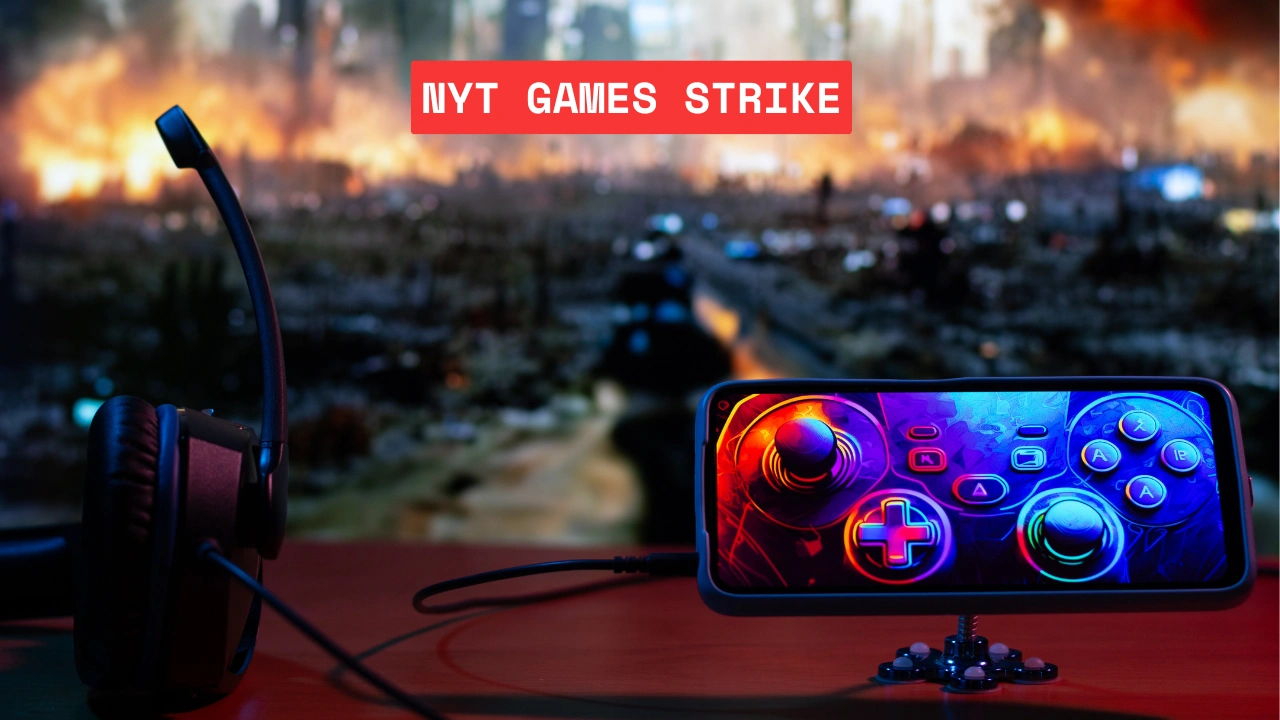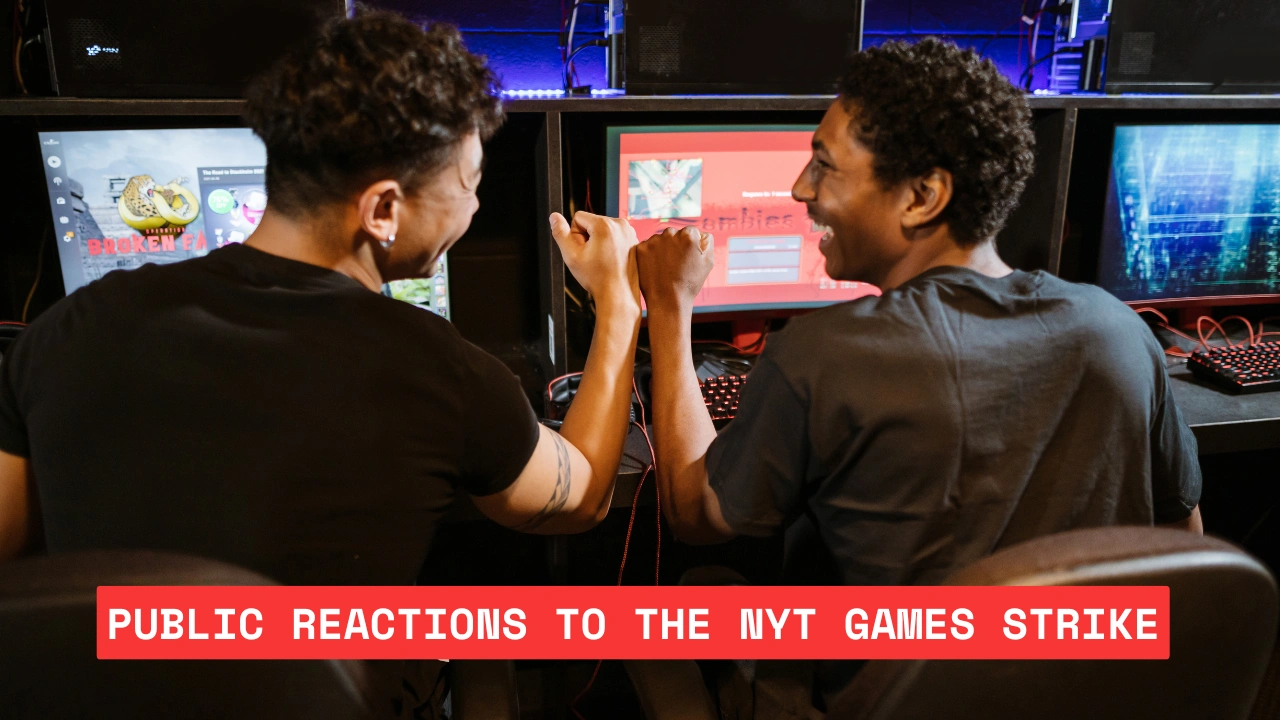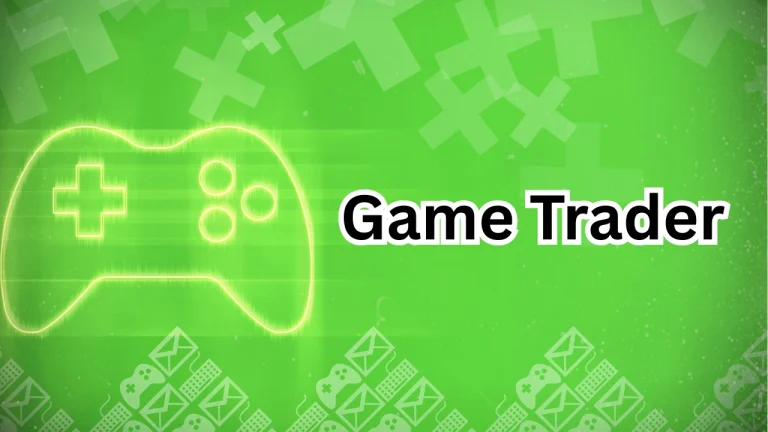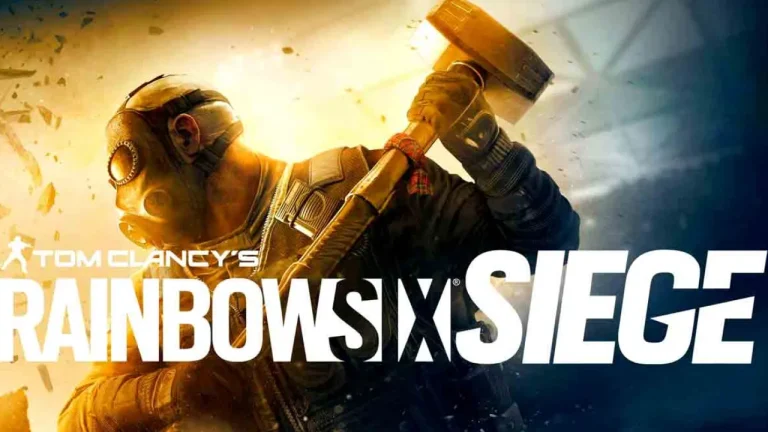NYT Games Strike Timeline: Events That Shaped the Walkout

The nyt games strike took place during one of the most critical periods for American journalism, just before the 2024 presidential election. Organized by the New York Times Tech Guild, the strike brought attention to the often-overlooked tech workers behind major news platforms. Their walkout, demands, and the public’s reaction have left a lasting impact on the media industry.
Read more about games and marketplace of ubisoft and rainbow six siege at marketplace r6
What is NYT Games Strike?
The NYT Games Strike refers to a labor protest by over 600 tech workers from the New York Times Tech Guild. These employees, including software developers and engineers, walked out on November 4, 2024. They demanded better pay, remote work protections, and fair treatment after two years of failed contract talks.
The strike was timed just one day before the 2024 U.S. presidential election to highlight the workers’ importance. During the strike, they encouraged users to avoid NYT Games like Wordle and Connections. Their action drew national attention to the crucial role tech workers play in news coverage.
Why the NYT Games Strike Happened?
The nyt games strike began on Monday, November 4, 2024, when around 600 members of the NYT Tech Guild walked out. These workers had been negotiating a contract with The New York Times for nearly two years without success. Their primary demands included better pay equity, strong protections around hybrid and remote work, and a just cause firing policy.
Strikes typically occur when workers believe their voices are not being heard, and the nyt games strike was no different. The workers chose this critical moment, just one day before the U.S. presidential election, to demonstrate how vital their roles are to the paper’s digital presence. This planned action highlighted their importance in maintaining the functionality of New York Times’ apps, websites, and online platforms.
Also Read: JOI Game The Japanese Olympiad in Informatics for High School Coders
Who Participated in the NYT Games Strike
The participants of the nyt games strike were members of the NYT Tech Guild, which includes a variety of tech employees. This group features software developers, data engineers, and product managers who design and maintain the NYT’s digital offerings. Without their contributions, platforms like NYT Games, NYT Cooking, and even election coverage pages would face serious operational risks.
Interestingly, despite months of planning, around 100 workers reportedly crossed the picket line on election day, according to Business Insider. This event sparked debates among readers and employees about solidarity, individual choices, and strike effectiveness.
What Are NYT Games?
NYT Games is the home for popular puzzle games like Wordle, Connections, Spelling Bee, and the iconic Crossword. These games have become daily habits for millions of readers. During the nyt games strike, union organizers specifically asked supporters not to use these games as a show of solidarity.
The NYT Games app has been a significant part of The New York Times’ digital growth strategy. With the rise of casual gaming among readers, games like Wordle and Connections quickly became subscription drivers. Thus, boycotting NYT Games during the nyt games strike had symbolic and economic implications.
Also Read: Camp Games Exciting World for Fun and Learning
Timeline of the NYT Games Strike
Here’s a detailed timeline showcasing the key dates related to the nyt games strike:
| Date | Event |
|---|---|
| Nov 4, 2024 | NYT Tech Guild workers walked out, starting the strike |
| Nov 5, 2024 | Election day coverage operated under pre-planned backups |
| Nov 6-11, 2024 | Continued strike activities, with calls for app and site boycotts |
| Nov 12, 2024 | Workers officially ended the strike and returned to work |
The strike, while relatively short at one week, demonstrated the tech workers’ influence on the NYT’s day-to-day operations.
The Role of Picket Lines During the Strike
An important concept in understanding the nyt games strike is the idea of the picket line. Workers formed a digital picket line, asking readers to avoid using New York Times apps and websites. A picket line originates from the French word “piquet,” meaning a pointed stake, symbolizing protest and defense.
Crossing the digital picket line meant using services that workers were asking people to boycott. Apps like Wordle, Connections, Spelling Bee, and the NYT Cooking app were all part of this symbolic picket. Supporting the workers meant refraining from engaging with these services during the strike.
How the NYT Prepared for the Strike
The New York Times management had months to prepare for the possibility of a strike. Backup systems were created, essential operations were automated, and cross-trained workers were assigned to monitor major platforms. Due to this preparation, coverage of the 2024 election remained largely unaffected.
Even though the NYT succeeded in maintaining service continuity, the nyt games strike brought wider public attention to the behind-the-scenes work done by tech employees. Many users, previously unaware of the human element behind their favorite games and news sites, learned about the critical nature of these roles.
Also Read: Game Day Outfits Stylish Looks for Every Sports Fan
Worker Alternatives During the Strike
During the nyt games strike, members of the NYT Tech Guild even created alternatives for the public to support. They launched games like “Strikle,” a Wordle-style game, and “Connections: Strike Edition.” These alternative games allowed players to continue enjoying puzzle games without supporting The New York Times’ digital products during the protest.
Here’s a brief comparison table:
| Game | Original NYT Version | Worker Strike Version |
|---|---|---|
| Wordle | Wordle (NYT Games) | Strikle |
| Connections | Connections (NYT Games) | Connections: Strike Edition |
This creative move showed the workers’ spirit and innovation even during a protest.
Public Reactions to the NYT Games Strike
The public response to the nyt games strike was mixed. Some loyal users were frustrated about missing their daily Wordle or Connections fix. Others supported the workers by deleting NYT apps or pausing their subscriptions for the duration of the strike.

Critically, the strike succeeded in raising awareness about the value of tech employees in a major media organization. It forced readers to consider the infrastructure and the people who make digital platforms operate smoothly.
Importance of Supporting Worker Strikes
Supporting or opposing a strike is a personal decision, but understanding the reasons behind a strike is essential. In the case of the nyt games strike, workers were not asking for unreasonable demands; they sought fair treatment, better pay, and modern workplace protections.
Workers also stressed the need for public awareness, encouraging readers to think critically before using digital products during the strike period. As with all major labor actions, there are two sides to the story, and doing your own research is important before making any decision.
Lessons Learned from the NYT Games Strike
The nyt games strike taught several important lessons about digital labor and solidarity. It showed that even workers behind the scenes hold power and deserve recognition. It also showed that preparation by management can minimize disruptions, but the value and visibility of workers cannot be ignored.
More importantly, it sparked conversations about digital boycotts, labor rights, and how consumers can influence corporate behavior with their choices.
Labor Actions Shaping Media Companies
As technology continues to dominate the news industry, future strikes like the nyt games strike are likely to become more common. Tech workers have become indispensable to major media companies, and their voices are growing stronger.
Negotiations following the strike are still being reported, but workers have already achieved something valuable: national attention and a new platform for their demands.
Conclusion
The nyt games strike was not just about one company or one election week. It was about a broader struggle for fair treatment in a changing digital world. By organizing, walking out, and creatively connecting with the public, the NYT Tech Guild showed that every worker behind your favorite apps matters. Whether you supported the strike or not, its impact will likely influence tech labor movements for years to come.






